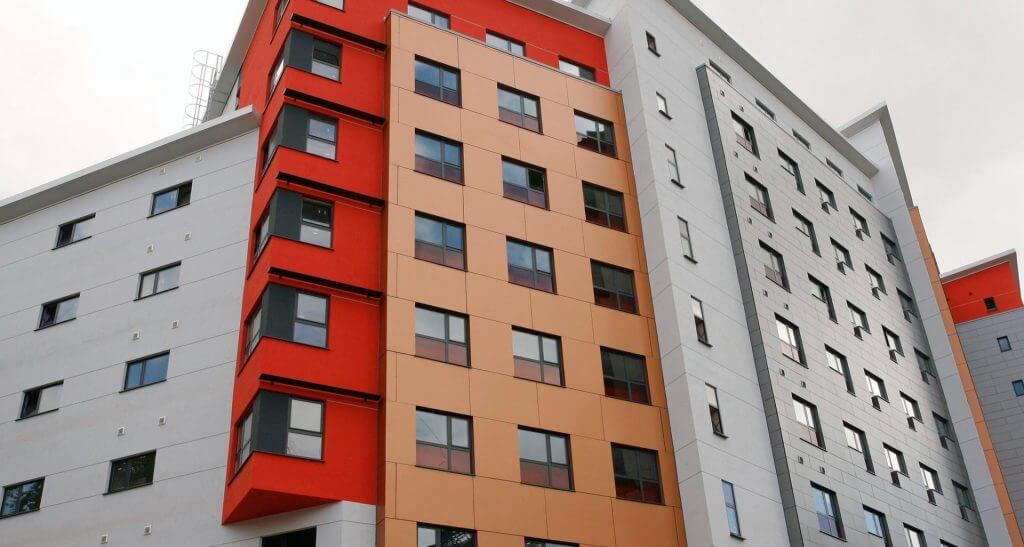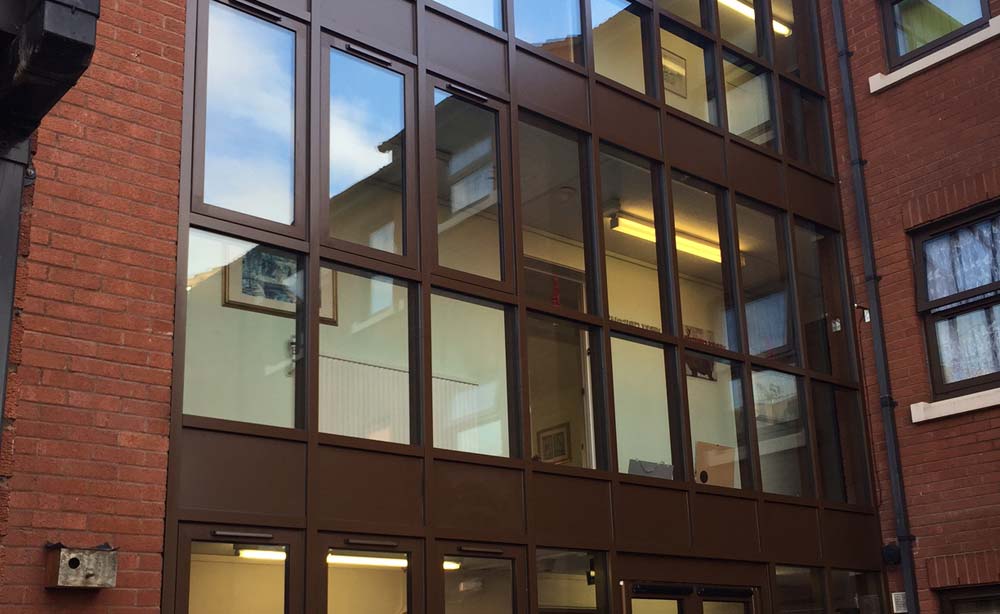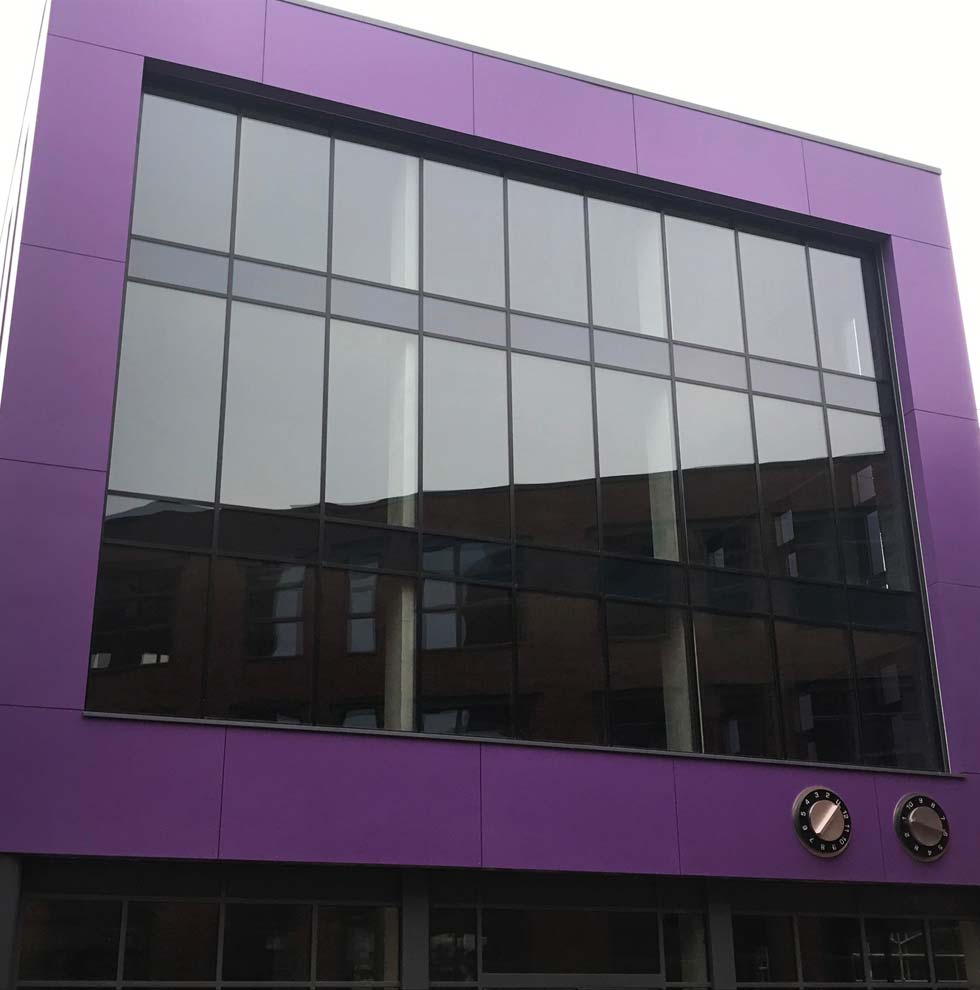
Cladding and curtain walling are both methods of protecting and enhancing the appearance of a building’s exterior. There are many similarities between the two methods but also several big differences. To help you to make a fully informed decision on the best material for your building development project, here are some of the main characteristics of both cladding and curtain walling.

Cladding a building involves attaching a protective or decorative material to the outside of a building. Cladding is installed directly onto the existing building and becomes an integral part of the building’s structure. Its main function is to protect against harsh weather conditions and moisture ingress. It can also help to improve thermal and acoustic insulation.
One of the main benefits of cladding over curtain walling is the choice of materials which are available. Whereas curtain walling is usually made from an aluminium frame with large glass panes, cladding can be made from a variety of different materials. Some popular cladding materials include wood, metal, concrete, and reinforced PVCu.

Although similar to cladding in that it protects a building’s interior, the main difference is that curtain walling is not part of the building’s structure. Curtain walling is attached to a building’s exterior but is completely self-supporting and does not put any additional load on the building’s structure and foundation. Because of this, curtain walling is by far the safer option.
Aluminium curtain walling does not have the variety of finishes available with cladding. It does, however, create a sleek modernist appearance which is popular with many commercial and high-rise residential installations. The aluminium frames can also be powder coated in almost any colour to provide enhanced customisation.

In summary, curtain walling provides more advantages than cladding. It is far more durable, provides greater protection against the elements, and is better in terms of thermal and acoustic insulation. It is safer and does not affect the building’s structure and can be integrated with a building’s windows and doors for a uniform aesthetic.
Cladding is easier to install than curtain walling which will require a specialist installer. It is also available in a wider variety of materials and requires less maintenance and periodic cleaning. Overall, curtain walling is the best choice for most large scale commercial and multi-storey residential installations while cladding may be a better choice for increasing the protection of a single-family residential property.
At Techniglaze, we install a range of high performing curtain walling systems. To find out more call 01761 417 654 or contact us online.
We are delighted with the windows, and have already been complimented by our neighbours on the upgrade.
Tyler and Paul were very professional and showed good initiative for the inevitable adjustments that needed to be made. They were particularly considerate of our house, it’s character and our pets! Please pass on our thanks and comments as appropriate.
We are delighted with the windows. As you know we were concerned that they would look different and more “clunky” but really you can’t tell the difference except that the new ones are not falling apart!!! The guys who did the fitting were also good. They were working in freezing fog, really cold but they carried on regardless, they were extremely tidy and cleared up after themselves.
I am delighted with the recent installation, it’s good to look out of clear windows. The work was carried out professionally by two excellent gentleman.
I will not hesitate to contact you when I am ready to replace others, also would certainly recommend you to others.
Really impressed with the customer service and professionalism from everyone at Techniglaze. Especially liked the follow up call after our doors were fitted to make sure we were happy. Would definitely recommend.

Excellent. This company really care about doing a great job. Roger and Keith have been very helpful and explaining things in detail that a lay person may not understand.

Excellent customer service, range of products and attention to detail. I honestly can’t rate them highly enough. They stepped in and came to the rescue after Salisbury glass cost us 8 months of time and 100k in increased material costs.

These guys have been great to us. Helped us out at short notice after we were badly let down by another supplier. We asked for several minor details that were not standard (e.g. different locking mechanisms), and they were flexible and open to ideas. We ended up also commissioning our front door from them; it is super sturdy and beautiful. Always courteous, professional, and good payment terms.

First class service for my window repair, with tricky access issues and a large, heavy glazed unit to install. Really glad I chose this company.

I was looking for a company that could deliver a bespoke pair of roof lights in the Alitherm system. Techniglaze offered the best price and worked with us to ensure the sizes were exactly right and conducted the sales process very professionally. The product is first class and we are exceptionally pleased with the service and product. I can highly recommend Techniglaze.
